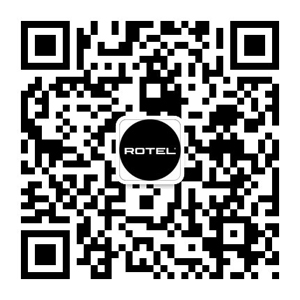Suporte Rotel
Estamos aqui para ajudá-lo com qualquer dúvida que possa ter sobre seus produtos e dispositivos Rotel, ou podemos oferecer uma visão sobre o mundo do som e da qualidade do som.
They need not sit idle! If your front speakers can be bi-amplified you can direct more power to the front left and right speakers. (Your speakers must have two sets of speaker binding posts that can allow the bass section to be separated from the midrange/tweeters).
Alternatively, you can use these two channels in a multizone configuration to drive speakers in another room.
If the Rotel integrated amplifier is turning on but there is no output from the speakers, the first thing to check is the connections in your system, and make sure this is not isolated to a specific source by changing inputs. For example, if there is no sound from the tuner but the CD input plays fine, perhaps the antenna has come loose or has moved to an area of poor reception in the room.
Verify that all speaker wires are properly connected on both ends and none of the wires are touching.
Also, make sure that either the Speakers A or Speakers B (or both) is selected – without these selected the speakers are not active. If this does not solve the problem your dealer may be able to offer further assistance in troubleshooting your system.
Zone 2 is designed for analog sources only. If the DVD player or Satellite is connected via only a Coax Digital or Optical audio inputs, these sources will not be available in zone 2. To get audio output from these sources in the second zone, connect the analog outputs to an input on the unit in addition to the Digital input.
The following Apple iOS devices are supported by the front USB input on Rotel products:
Assignable 12-volt triggers allow you the option to tell the receiver or preamplifier what other components to turn on depending upon the source selection chosen.
DVD-Audio (also abbreviated as DVD-A) is a digital format designed to provide high-resolution audio on a DVD disc. DVD-Audio is not the same as a standard DVD-Video disc and generally DVD-Audio discs have very limited video content.
DVD-Audio discs can support from mono up to 6 channels of audio. Mono and Stereo audio tracks are supported up to 24-bit/192kHz, and 5.1 surround tracks are supported up to 24-bit/96kHz. Discs can have multiple tracks, so for example a DVD-A disc can contain both a 24-bit/192kHz stereo audio track as well as a 24-bit/96kHz 5.1 surround audio track.
The high-resolution audio on DVD-A discs is stored on the disc in Linear PCM format. The audio may be stored on the disc either in an uncompressed format, or compressed using Meridian Lossless Packing (MLP). Depending on the amount of audio tracks on the disc, compression may be necessary.
While a DVD-Audio player is required in order to access and play the high-resolution audio on a DVD-A disc, most DVD-A discs are also backwards compatible and will play on a standard DVD-Video player as well. Most DVD-A discs contain DVD-Video compatible data with a standard Dolby Digital 5.1 or Dolby Digital 2.0 soundtrack that can be played on a standard DVD player. Some DVD-A discs even contained DTS 96/24 audio tracks.
The most typical connection to an audio system for a DVD-A player is via 6-channel analog connections, thus allowing the DVD-A player to decode the high resolution audio in the player and stream it to the audio system in an analog format. All current Rotel surround receivers and processors provide an analog multichannel input that would allow connection of a DVD-Audio player.
Due to the large bandwidth required to transmit HD audio, the only digital cable with sufficient bandwidth to allow digital streaming of the high-resolution audio tracks on a DVD-A disc is HDMI. As DVD-A discs use Linear PCM for the audio format any HDMI device that supports audio over HDMI should be able to play back audio from a DVD-A disc via HDMI.
DVD movies come either pan and scan (4:3) or letterbox (widescreen) (16:9). Although pan and scan movies fill the entire TV screen, you're actually missing some of the picture. This is because pan and scan presentations are "cropped", meaning either side is cut out in order to fill the screen. Whenever you watch a videotape or TV movie that says "this film has been edited to fit your television", that's a nice way of saying they've chopped off the sides of the picture. Widescreen films, on the other hand, show the entire picture with nothing cropped. Doing so requires black bars at the top and bottom of the film. Some viewers find these black bars too distracting, but they mean you're seeing the whole film as it was originally shown in movie theatres. Thanks to the capacity of the DVD, many discs contain BOTH pan and scan and letterbox versions, so you can choose which format you prefer. With most television manufacturers producing widescreen 16:9 sets, some DVDs are being released in anamorphic widescreen. This format provides the full frame without any black bars, insuring all available lines of resolution are used on the picture. However, you must have a 16:9 set to take advantage of this. If you have a standard 4:3 screen and you want to play an anamorphic disc, you'll need to be sure your DVD player's menu is set to 4:3, otherwise, the picture won't look right.
The RA-11 and RA-12 will play a wide variety of popular audio file formats, depending upon the type of connection being used. The list below details what files will play with each connection type:
The RA-1570 and RC-1570 will play a wide variety of popular audio file formats, depending upon the type of connection being used. The list below details what files will play with each connection type:
扫一扫以下二维码或者搜索微信公众号即可关注,获取最新鲜的ROTEL资讯!
微信公众号:rotel-hifi
